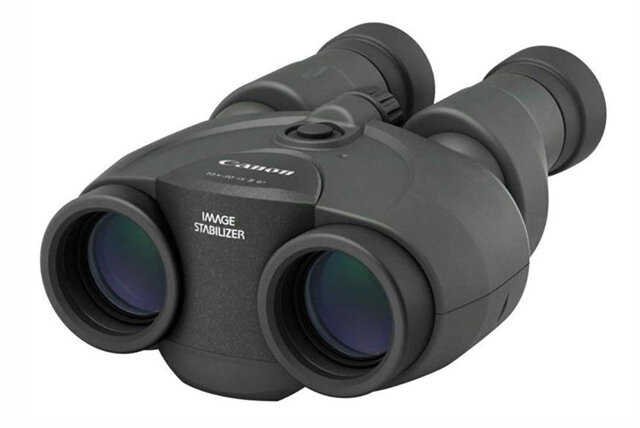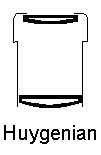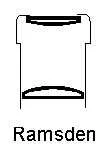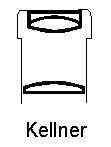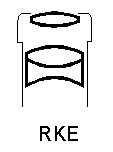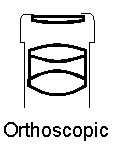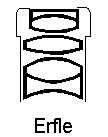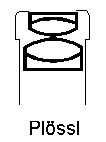How far can the Telescope look at
1. The distance between the Telescope is related to human vision.For example, the letter on the vision table: When "E" is 5 meters away, people with good vision can see the bottom line. People with myopia may only see the previous lines of "E".If you put the vision to 50 meters away, with a 10 -fold Telescope, it is equivalent to 10 times (the same as 5 meters away).People with good vision can still see the bottom line. People with myopia still can only see the big "E" in the front, and the bottom is still unclear.People with myopia will say that this Telescope can't see 50 meters, and even the bottom letters cannot be seen clearly, and people with good vision will say that this Telescope is very good. Even the bottom of the vision table at the bottom of 50 meters is still clearly seen.EssenceCan you say that this Telescope can only watch 50 meters?
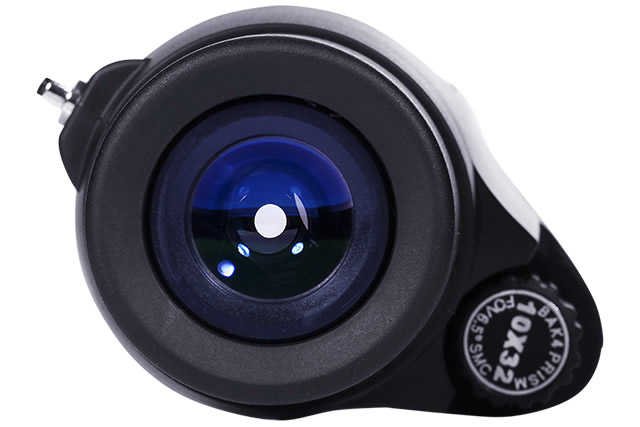
2. The distance between the Telescope is related to the size of the object.For example: there is an ant at 1000 meters. You use 10 times the Telescope, which is equivalent to looking at the ants near 100 meters. You must not see it.Can you say that this Telescope can't see 1,000 meters?If you are a personal at 1000 meters, you use a 10 -fold Telescope, which is equivalent to pulling people closer to 100 meters. You must see it clearly.With a Telescope, you can clearly see the mountains of the moon at 380,000 kilometers, but you can't see the earth satellite that is much more than us. This is the truth.
3. The distance of the Telescope is related to the quality of the air.For example, using the same Telescope, the same person observes a billboard at 1,000 meters.After the rain, in the sunny weather, you can clearly see the small words on the billboard.In the case of no sun and air in the cloudy days, there are cars and dust in the air, it may not be clear.Furthermore, if there is a fog, that is, there are a lot of suspended particles in the air, and the visibility is reduced. You may not even see 5 meters.This is why the heavy fog weather blocks the highway.
4. The distance of the Telescope is related to the quality of the Telescope itself.Two parameters of the two Telescope (multiple, diameter, field of view, pupil distance, pupil diameter), Telescope with exactly the same size, the price may be several times or even more, there is nothing weird.The price and multiple of the Telescope have little to do, and the military Telescope has almost no more than 10 times.The lens, prism, coating, and structural parts of the Telescope determine the quality of the Telescope.A good Telescope light transmission can reach more than 90%, and the poor Telescope is only 50%-60%. The poor Telescope watching the sky is obviously dark.
You should understand why the Telescope does not see this data?As long as there are unlimited objects, the Telescope can see infinite far.With hundreds of light -year planets, we can see it without a Telescope, and we can also see with a Telescope.The moon is far away from us (380,000 kilometers), and we can see it with a Telescope.But no matter how good you are using a good Telescope or a close distance, you can't see it. Why?Because they are too small!
The Telescope is an optical instrument used to observe long -distance objects. It can amplify a small horns with a small corner at a certain magnification, so that it has a large corner in the like space, so that the naked eye cannot be seen or could not see or can be seen or could not see it.The distinguished object becomes clear and distinguished.Therefore, Telescope is an indispensable Tool in astronomical and ground observations.It is an optical system that keeps the incident parallel light beam through objectives and eyepiece.It is generally divided into three types.
The refraction Telescope is a Telescope with a lens camera mirror.It is divided into two types: Galileo Telescope with melter mirror as a eyepiece mirror.The birch mirror is called the Capeler Telescope.
Galileo Telescope is a mirror that is a convex lens and a eyepiece is a concave mirror Telescope.The real image of the light through the refraction of the objective mirror is on the focus of the eyepiece (behind the purpose of the person). This is like a virtual image of the pair mirror, so it is refracted into a magnifying positive image.The magnitude of the Galileo Telescope is equal to the ratio of the focal length of the material mirror to the focal length of the eyed mirror.Its advantage is that the lens barrel can be short and can be positive, but its vision is relatively small.Two Gali Lue Telescopes with a low magnification of the magnification are tied together. In the middle, a bolts can be used to adjust their clear degrees at the same time, called "Drama mirror".Because it is easy to carry, it is often used to watch performances.The Telescope invented by Galileo has an important position in the history of human understanding of nature.Its advantage is that the structure is simple and can be directly in the right image.
The Capeler Telescope is composed of two convex lenses.Because there is a real image between the two, which can be convenient to install the branch board and excellent performance, professional -grade Telescopes such as military Telescopes and small astronomical Telescope are currently adopted.But this constitutional imaging is inverted, so it is necessary to add a positive system in the middle.
There are two types of systems: the prism is like the system and the lens are like the system.Our common front -wide and narrow typical binocular Telescope uses the two right -angle prisms.The advantage of this system is that the optical shaft is folded twice at the same time as positively, which greatly reduces the volume and weight of the Telescope.The lens is like a set of complex lenses as the system.
Due to the color difference between the mirror mirror and the ball difference, the modern refraction Telescope often uses two or more lens group crop mirrors.Among them, dual lens mirrors should be most commonly used.It is composed of convex lens made of a crown glass that is close to each other and a concave lens made of a piece of fire stone glass. It can completely eliminate the color difference between the two specific wavelengths, and the color difference of the remaining wavelength can also be weakened accordingly, as shown in Figure 2 in Figure 2Show.
When meeting certain design conditions, the gap and comets can be eliminated.Due to the effects of the remaining color difference and other aberrations, the relative caliber of dual lens mirrors is small, generally 1/15-1/20, rarely greater than 1/7, and the field of view is not large.Dual lens mirrors with a diameter of less than 8 cm can combine two lens glory together, called double glue compound mirrors, and there is a dual -separated mirror with a certain gap without glue.
In order to increase the relative caliber and field, multiple lens mirror groups can be used.For the Galileo Telescope, the structure is very simple and the light can lose less.The lens barrel is short and light.And it is positive, but the multiples are narrow, which is generally used for drama mirrors and toy Telescopes.For the Campler Telescope, you need to add a prism or a lens group to the image behind the object mirror to make the eyes observe the positive image.The general refraction Telescope uses the Capeler structure.
Because the imaging quality of the refraction Telescope is better than the reflected Telescope, the field of view is large, it is convenient to use, and it is easy to maintain. Small and medium -sized astronomical Telescopes and many special equipment are mostly refracted systems, but large refractive Telescopes are much more difficult to make than reflecting Telescopes because the smelting is large, because the smelting is large.The high -quality lens of the caliber is very difficult, and there is a problem with the absorption of light in the glass, so the large -diameter Telescope uses reflex.
The reflector Telescope is a Telescope with a concave reflector.It can be divided into several types such as Newton Telescope Kedar Telescope.
The principle of Newton's Telescope is to reflect the light on a focus using a curved mirror.This design method is several times higher than the magnification of the object to enlarge the object.It uses a parabolic mirror as the main mirror, enters the bottom of the lens barrel, and then folds back to the second reflector (diagonal reflex mirror of the plane), and once again changes the direction into the eye mirror focus plane.In order to observe, the eyepiece is placed near the side of the top of the Telescope lens barrel, as shown in Figure 3.Newton's reflection Telescope replaces the expensive and bulky lens collection and focusing on the light, thereby reducing the cost.
Newton's reflected Telescope system has a focal length of up to 1000mm and is still relatively compact and portable.Because the main mirror is exposed to air and dust, the Newton's reflectors Telescope requires more maintenance and maintenance.However, this small disadvantage does not hinder the popularization of this type of Telescope. For those users who want a price economy, they can still solve the weak observation and distant targets, Newton's reflecting Telescope is an ideal choice.Due to the principle of optical systems, the imaging of Newton's Telescope is an inverted image, which does not affect astronomical observations. Therefore, Newton's reflection Telescope is the best choice for astronomy.Through an additional lens such as the mirror, the image can be corrected, but the image quality will be reduced.
The Carse Green Telescope has a main mirror of the parabolic mirror, and the dual -curved secondary mirror reflects the light and passes through the hole in the center of the main mirror.In the lens of the small Telescope and camera, the secondary mirror is usually installed on the optical platform on the transparent optical glass board with a closed Telescope lens barrel.Such a device can eliminate the "star" scattering effect caused by the spider -type supporting frame.Although the closed lens cylinder will cause losses in the amount of light, the lens barrel can be kept clean and the main mirror can be protected.
It uses some characteristics of bilateral and parabolic reflection. The concave parabolic reflection mirror can converge all light in the light shaft into a single point -focus.The bilateral reflector on the convex surface has two focal points, which will reflect all light through one of the focus to the other focus.The lens of this type of Telescope will be placed in the design of sharing a focus in design so that the light can be used in another focus of the bilateral mirror for observation. Usually external eyepiece will also be at this point.The main mirror of the parabolic surface will enter the parallel light reflection of the Telescope and converge on the focus. This point is also a focus of the bilateral mirror.Then the dual -curved mirror reflects these light to another focus to observe the image there.
The main advantage of reflecting Telescope is that there is no color difference. When the object mirror is used, the ball difference can be eliminated.However, in order to reduce the effects of other aberrations, the field of view can be smaller.The materials that manufacture reflectors only require small expansion coefficients, small stress and easy grinding.The grinding reflectors are generally plated with an aluminum film on the surface, and the reflectivity of the aluminum film in the range of 2000-9000 Elaboratory is greater than 80%. Therefore, in addition to the optical band, the reflected Telescope is also suitable for the near-infrared and near-ultraviolet wave bands.research.The relative caliber of the reflective Telescope can be made large. The relative caliber of the main focus reflecting Telescope is about 1/5-1/2.5, or even more.There are only one surface of the main mirror that requires processing, which greatly reduces the difficulty of cost and manufacturing. Therefore, the current optical Telescope with a caliber greater than 1.34 meters is all reflecting Telescopes.A large -caliber reflecting Telescope can obtain the focus system (or Newton system), Kaserglin system, and folding system by changing different sub -mirrors.In this way, a Telescope can get several different relative caliber and field.Reflecting Telescope is mainly used for celestial physics.
This kind of Telescope is based on the spherical reflex mirror, and then adds a refractive element for correctional imaging, which can avoid difficulty in large informal processing and get good quality quality.The more famous is Schmid Telescope, as shown in Figure 5.It places a Schmidt formal plate at the center of the ball reflector.It is one surface of the plane, and the other side is a mild deformation of the non -spherical, which makes the center part of the beam slightly converge, and the peripheral part is slightly divergent, just to correct the ball difference and comet difference.
The optical system of the Mark Subetov Telescope is composed of a concave spherical reflex mirror and a lens that corrected the ball difference in front, as shown in Figure 6.Correction of the lens is the sphere. The curvature radius of the two surfaces is not much different, but it has considerable curvature and thickness.Therefore, this system is sometimes called a moon mirror system.Properly select the curvature radius and thickness of the two sides of the lens, which can make the bending lens generate enough to compensate for the ball difference between the concave pads mirror, and at the same time meet the color elimination conditions.In the entire system, the distance between the bending moon lens and the spherical mirror can be corrected.The statue of the Macsolov long mirror optical system is very small, but the venue is relatively large, so it must use curved negatives that match the focus surface.The central part of the second side of the bending moon lens can be grinded into a spherical side with a longer curvature radius (it can also be a lens with a glue combined, which constitutes the Mark Subetov Kasselin system with relative caliber.Part of the central mirror part of the central mirror forms a Masukov-Carseglin system.
In addition to Schmidt Telescope and Mark Subov Telescope, there are two derivatives of these two Telescopes, such as Super Schmidt Telescope, Beck -Nuen camera, etc.In the refractive Telescope, the reflex mirror is used, and the refractive mirror is used for correctional image difference.It is characterized by a large caliber (or even greater than 1), strong light power, broad vision, and excellent quality.Suitable for celestial photography and observation of celebrities, comets, meteors and other celestial bodies.If a small eyes look at the reflected Katgreen system, the lens barrel can be very short.

